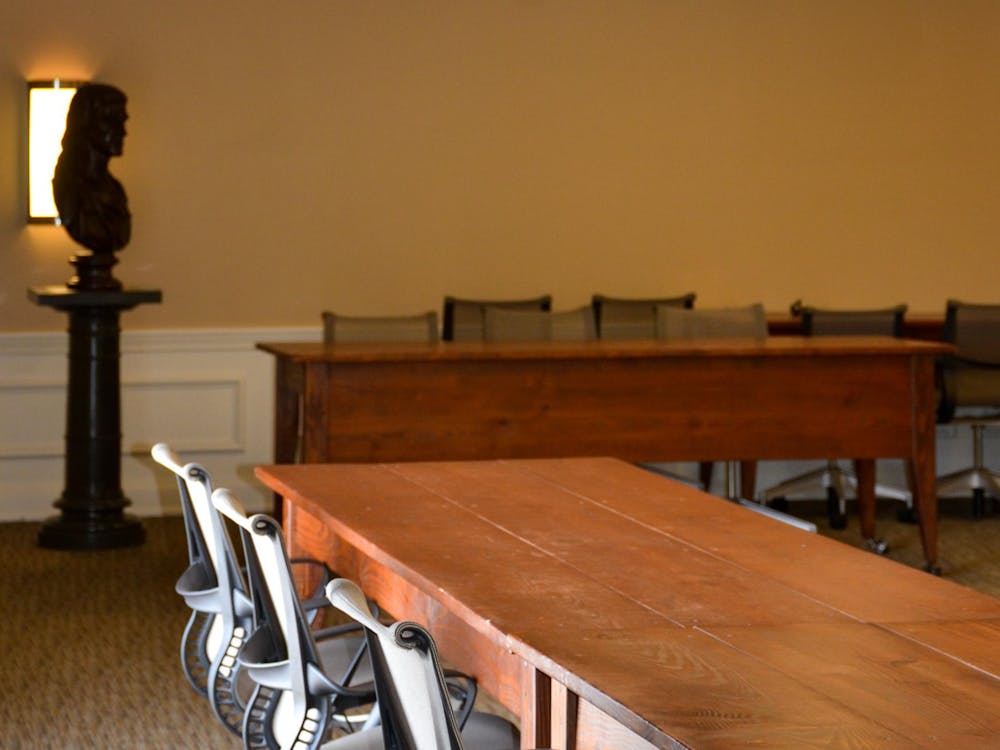Today, women constitute a majority of the entering class -- a record-breaking 56 percent -- up two whole percentage points from previous years. Thirty-five years ago, however, the idea of women "trampling the Lawn" of Mr. Jefferson's University was at worst blasphemy and at best an odd novelty.
The first pioneers
Though 1970 is the most often cited year in terms of co-education and the University, women had attended the University long before that. According to files kept by the Dean of Women, nearly 15,000 women attended the graduate and professional schools prior to full co-education, not counting the thousands of female students who studied in the nursing program.
According to a study on women at the University conducted in 1940, the first female students attended the University in 1892. That year, Caroline Preston Davis applied to the Board of Visitors for special permission to study mathematics. The Board agreed, with the provision that she would not receive a degree but rather a certificate of proficiency for her efforts. In 1894, a second woman, Addis Meade, followed the same course and passed her examinations for a master's in mathematics.
Although most courses in the liberal arts were restricted, women entered the nursing field in conjunction with the University hospital, as early as 1901. From its creation at the beginning of the 20th century until 1948, women who entered the Training School for Nurses received a diploma as a Registered Nurse at the end of their studies.
Because of their relative isolation from the rest of the University, women enrolled in the nursing program were not considered students. In 1951, however, students in the nursing program were able to receive a Bachelor's of Science in Nursing degree, and the program officially changed to a School of Nursing, independent from the hospital, until 1956.
Coordination attempts
Not everyone at the University agreed with the unequal admissions policy, which refused to accept women on the same basis as men. Mary Branch Munford served as a member of the Board of Visitors from 1926 until 1938. Even before her service, however, she championed women in higher education as the chair of the Central Committee of the Coordinate College League, a group which sought to establish a coordinate college for women in Charlottesville.
From 1910 to 1918, Munford's efforts led to proposed legislation in the General Assembly to create the coordinate college, but each year the bill failed. In 1920, however, the Board agreed to a compromise that would admit mature women into the graduate and professional schools.
According to University History Prof. Phyllis Leffler, who has studied women at the University prior to co-education for the past seven years, the Board eventually gave in because it feared the school might be forced into co-education without a compromise.
"It was really a defensive measure to adopt this co-education policy -- what I call co-education on a restricted basis," Leffler said. "It was the stop gap measure so that they hoped they wouldn't have to deal with this issue in the future."
Such limited success was not enough for Munford, who continued to advocate for the creation of the coordinate college until her death in 1938. In 1943, largely because of Munford's efforts, the University officially became affiliated with Mary Washington College in Fredericksburg.
The relationship between Charlottesville and Mary Washington, however, did not fit into the normal coordinate college mold.
"Mary Washington couldn't possibly be a typical coordinate school because it was located over 70 miles away," Leffler said. "Coordinate colleges were located in close proximity to the main university, and the whole nature of coordinate education was that they would share certain facilities or resources so women and men would not be educated in the same classrooms, but they would have equal access or shared access. Professors would teach both men and women but separately because of this notion of separate spheres."
Because of the distance between the two schools, Mary Washington was more of a "sister school" to the University because both had separate facilities and resources, Leffler said.
The stable years
Despite the addition of the so-called "coordinate college," from 1920 until the 1960s, the admissions policy concerning women remained fairly stable. Women could enter the Graduate Arts and Sciences, Law, Engineering or Education programs on an equal basis with men, and if they were at least 20 years old and had two years of credit from another institution, they could apply to earn vocational degrees in the College






